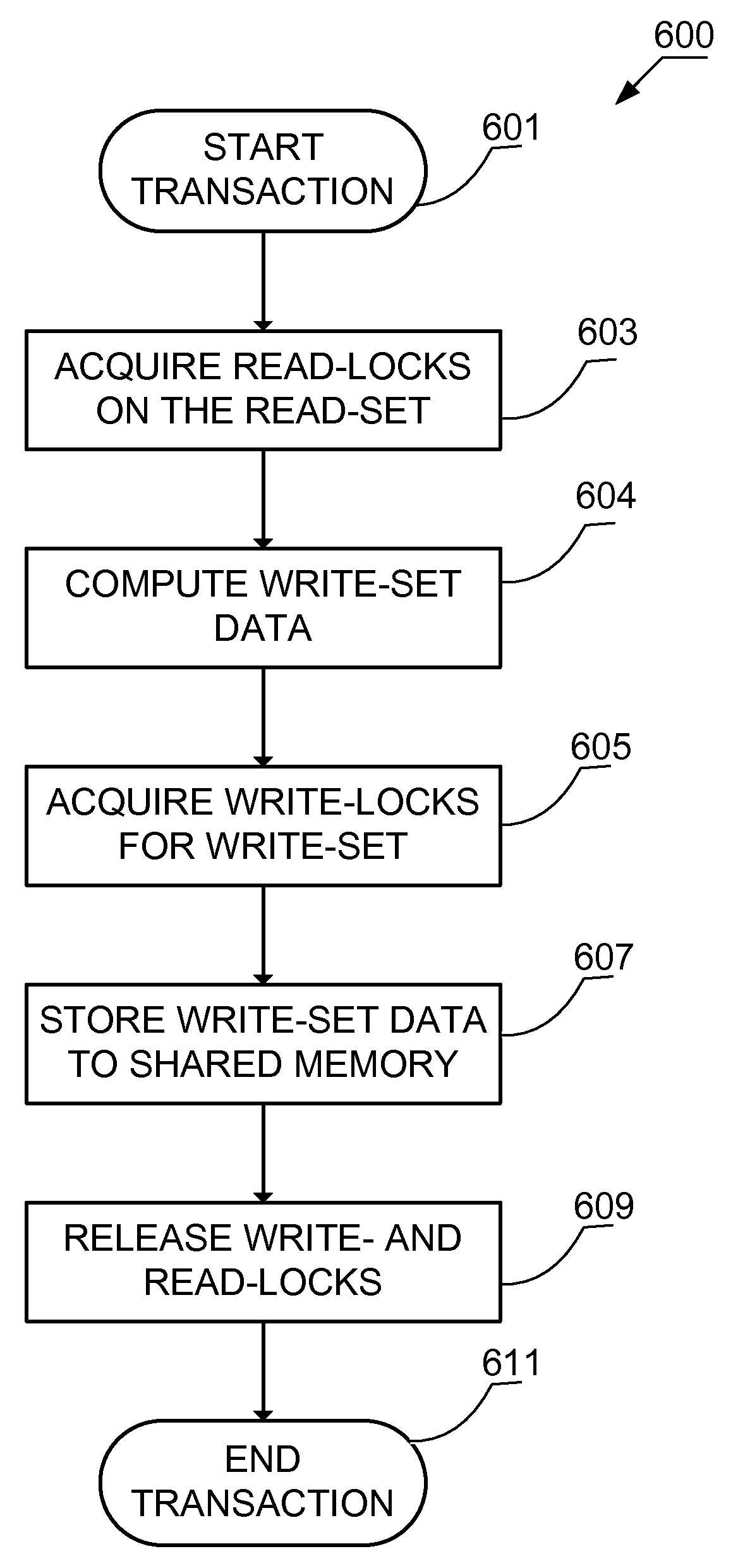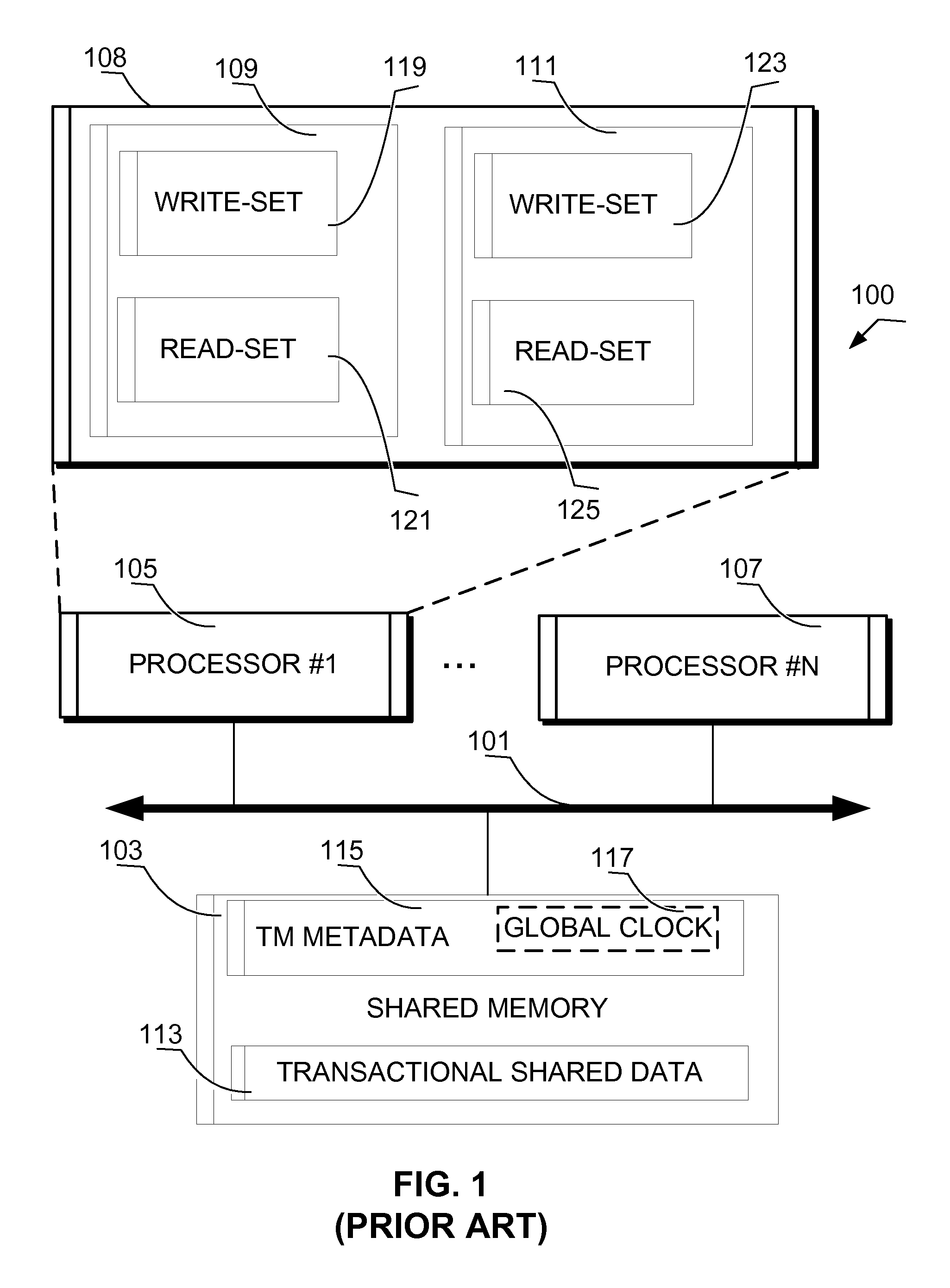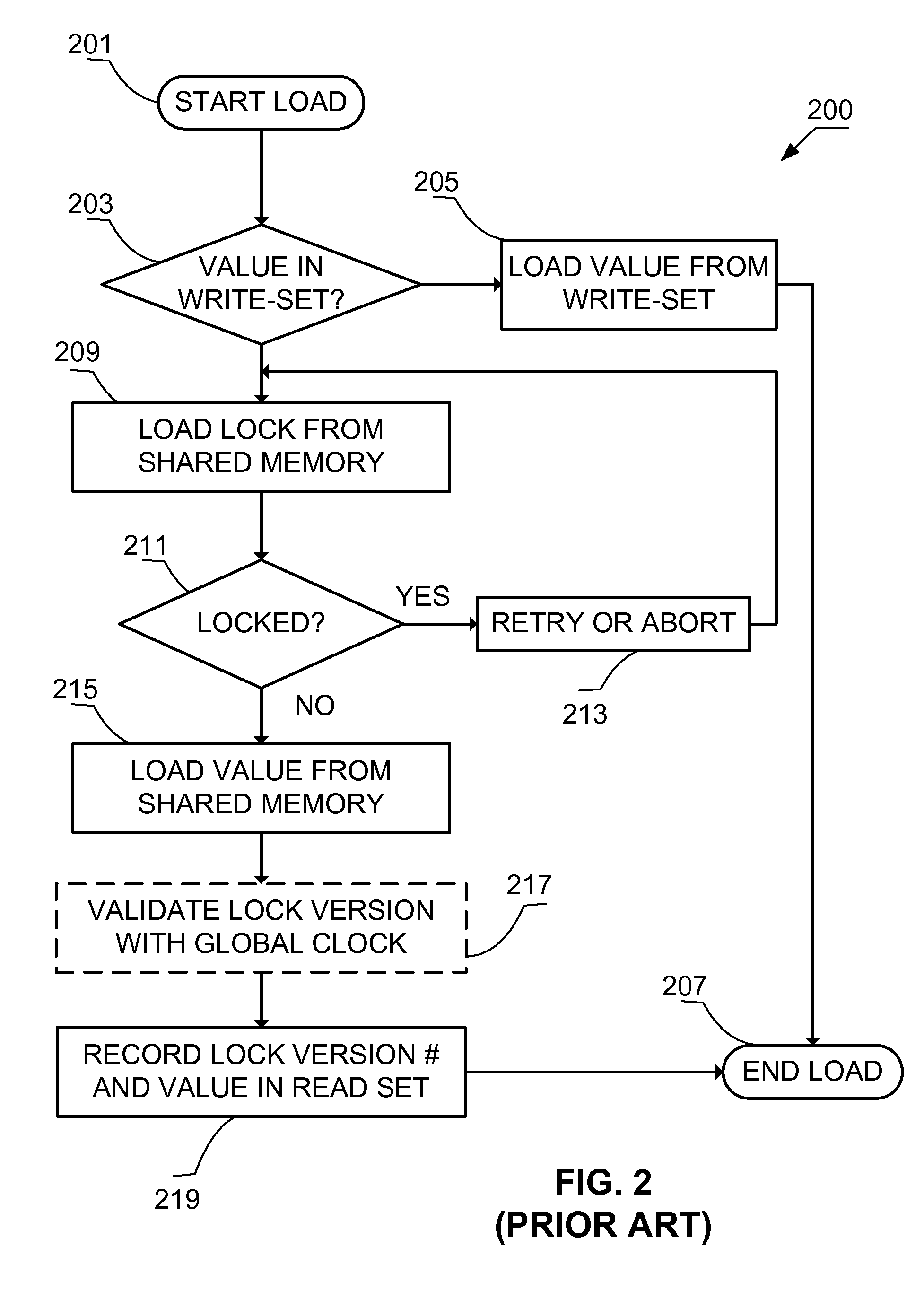Efficient implicit privatization of transactional memory
a technology of transactional memory and implicit privatization, applied in the field of transactional computer memory, can solve the problems of difficult trade-offs, difficult mutual exclusion of pessimistic-concurency-control, and easy error
- Summary
- Abstract
- Description
- Claims
- Application Information
AI Technical Summary
Problems solved by technology
Method used
Image
Examples
Embodiment Construction
[0059]The technology described herein teaches methods for committing a transaction to a shared memory. The shared memory is in communication with one or more processors that are executing a plurality of threads. Each of the one or more processors have the capability to operate a lock in the shared memory. The transaction includes a read-set and a write-set. The read-set identifies a first read location of the shared memory. The first read location is covered by a first lock object. The write-set identifies a result data value that will be stored at a first write location of the shared memory. The first write location is covered by a second lock object. One method can be used when the first lock object and the second lock object each have a reader mode and a writer mode. This method acquires the first lock object using the reader mode and also acquires the second lock object using the writer mode. Once the second lock object is acquired the method stores the result data value at the ...
PUM
 Login to View More
Login to View More Abstract
Description
Claims
Application Information
 Login to View More
Login to View More - R&D
- Intellectual Property
- Life Sciences
- Materials
- Tech Scout
- Unparalleled Data Quality
- Higher Quality Content
- 60% Fewer Hallucinations
Browse by: Latest US Patents, China's latest patents, Technical Efficacy Thesaurus, Application Domain, Technology Topic, Popular Technical Reports.
© 2025 PatSnap. All rights reserved.Legal|Privacy policy|Modern Slavery Act Transparency Statement|Sitemap|About US| Contact US: help@patsnap.com



